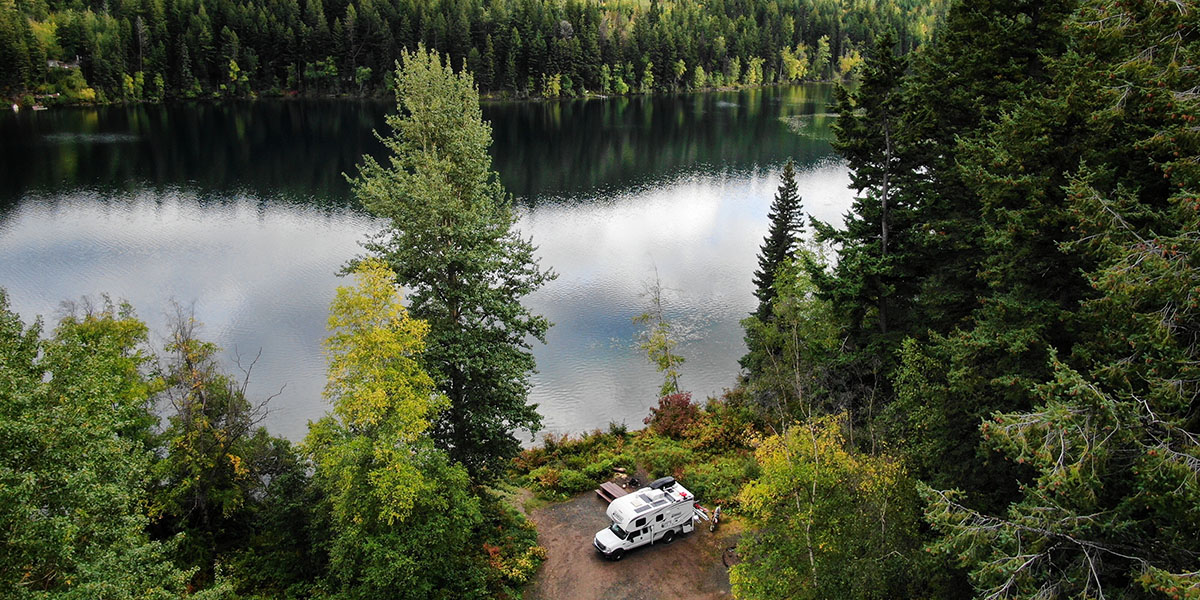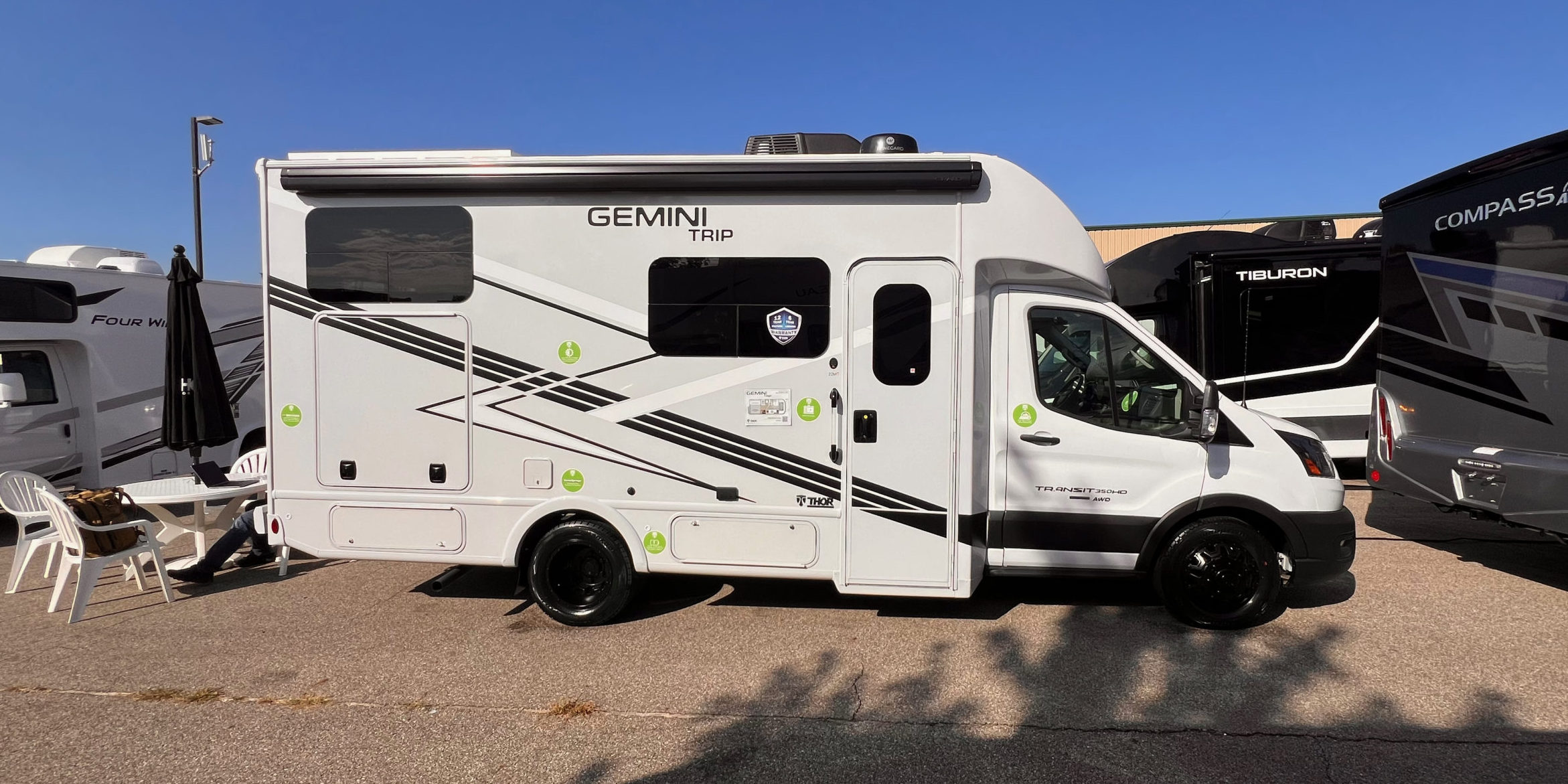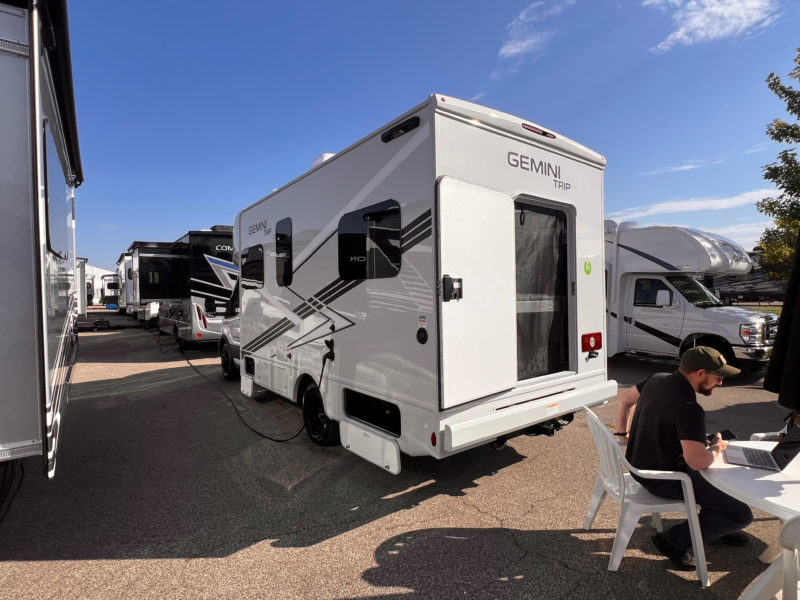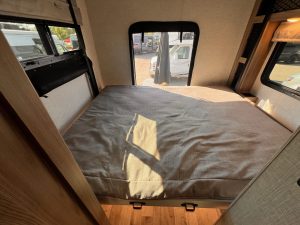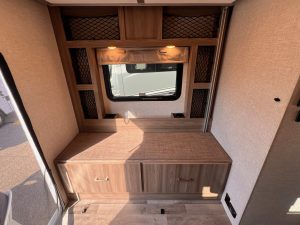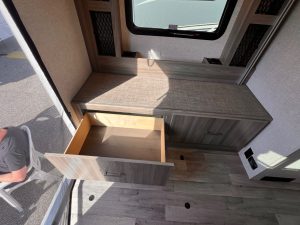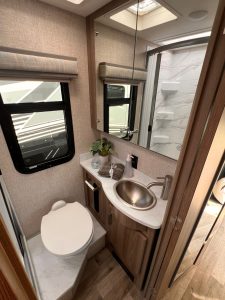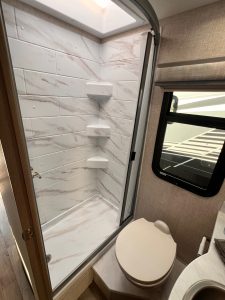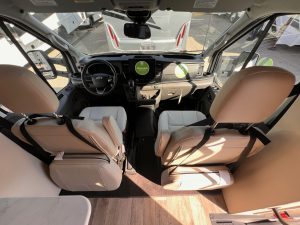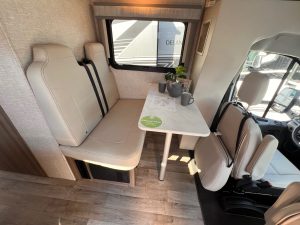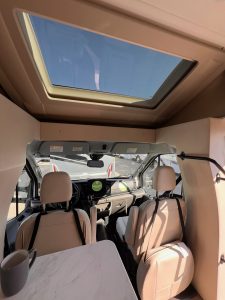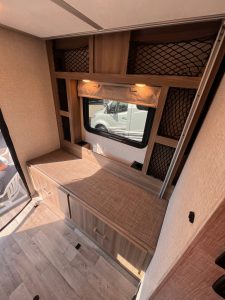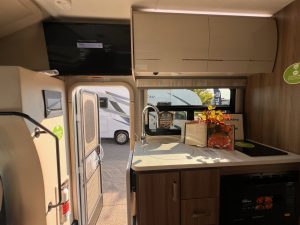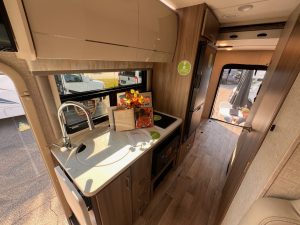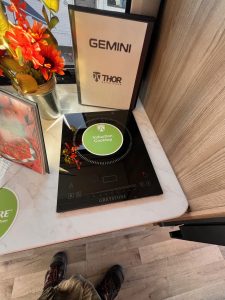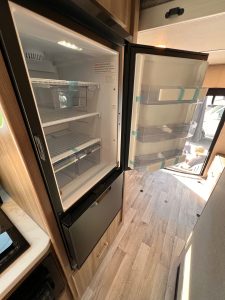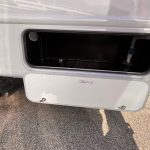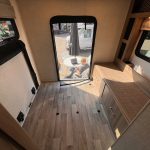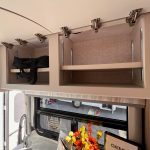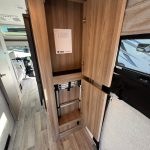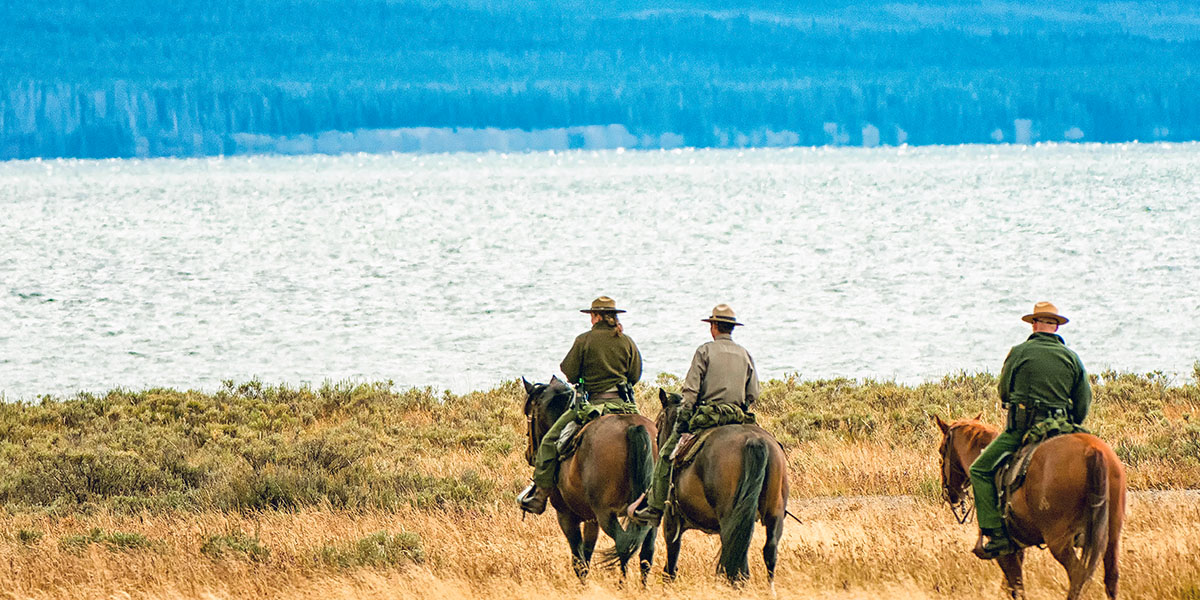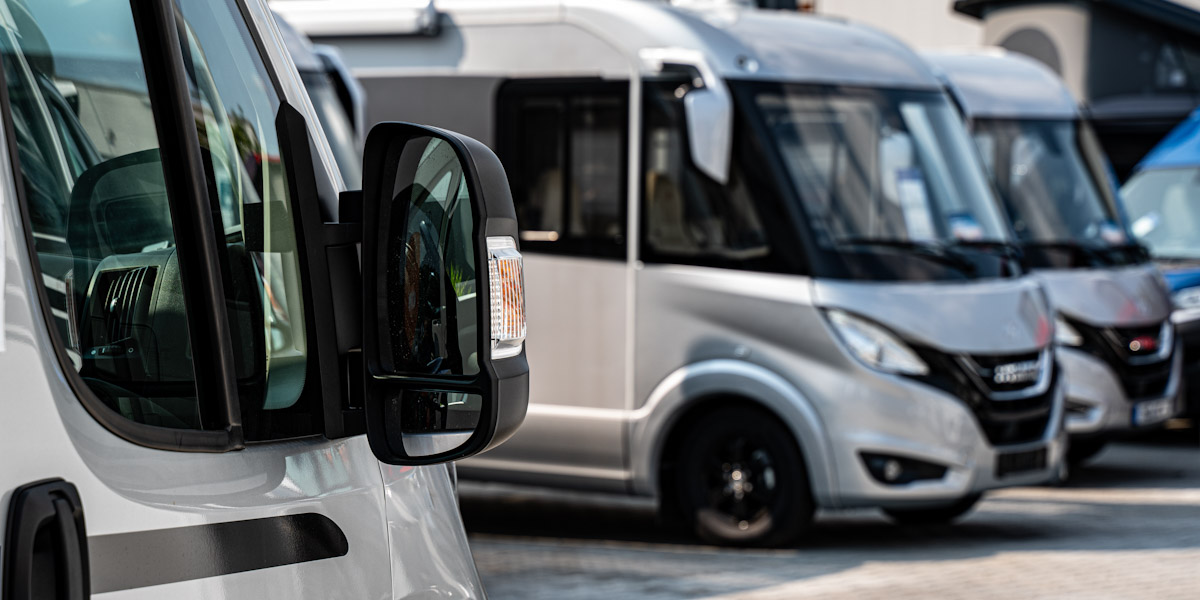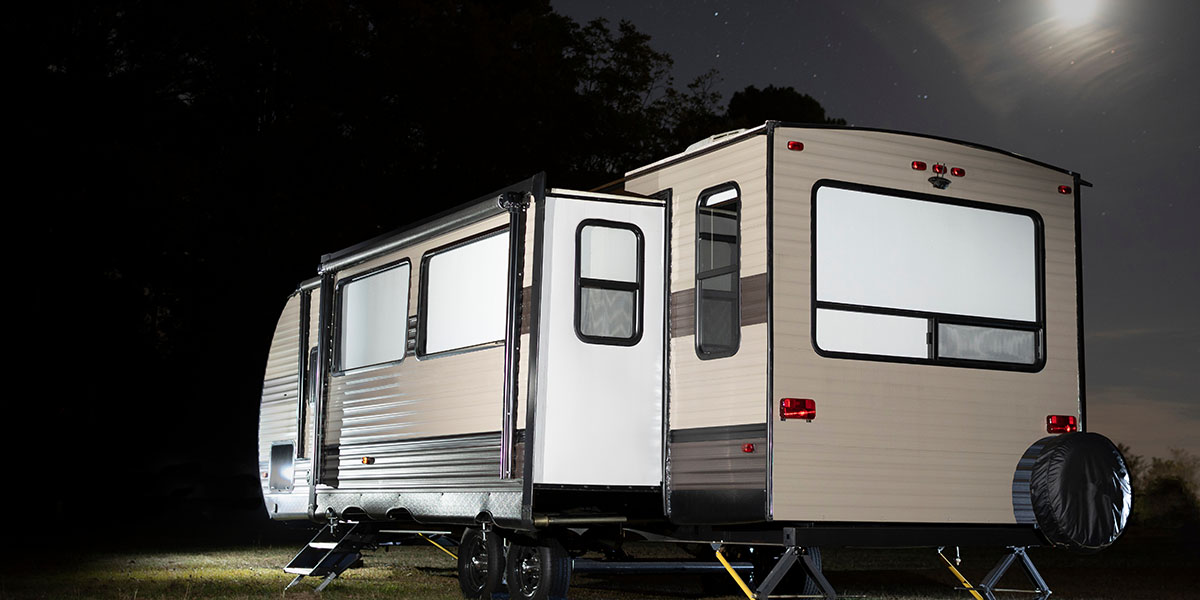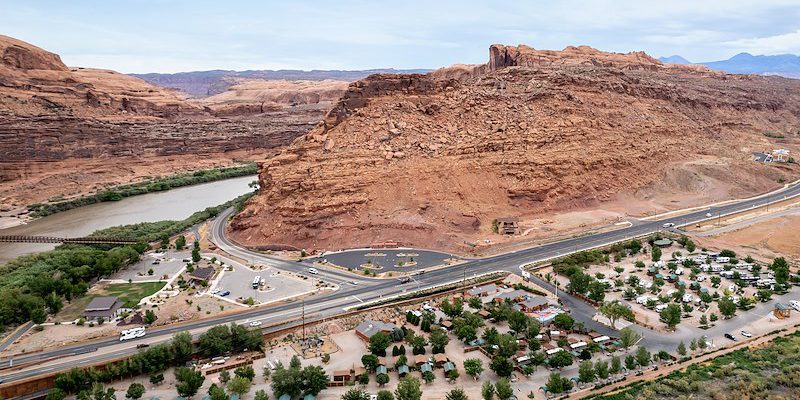If you’ve ever looked at your RV and thought, “Maybe I’ll just give this thing a fresh coat of paint,” pump the brakes for a second. Because while RVs may look like oversized vehicles or tiny homes on wheels, painting them is a whole different beast compared to your car or living room walls. Yes, RV paint is different. And if you don’t understand how and why, your dream of a DIY facelift could end up turning into a disaster.
Now, if there’s one thing we’ve learned in our seven years on the road, it’s that many things about an RV — from the plumbing to the paint — is uniquely built for life in this particular lifestyle. It’s not to say that there aren’t any similarities, but some things are simply way different than your normal sticks and bricks home. That includes the exterior paint, which has to put up with way more abuse than your typical vehicle or home ever will.
So, whether you’re planning a full-on DIY project or just curious why that paint quote was more than your first car, here’s everything you need to know about RV paint, how it differs, and how to make the right decision for your rig.
Why RV Paint Is Different — and Why It Matters
Let’s start with the obvious. Your RV is a giant moving box constantly exposed to the elements. Unlike a car that’s parked in a garage or a house that stays still, your RV’s paint job takes a beating. We’re talking sun, rain, dust storms, hail, temperature swings, tree sap, bug splatter, road grime … whew! You name it.
RV paint is designed to handle all of that. It’s not just about looking pretty, it’s about protection, and here are some of the reasons this isn’t your normal paint job
RV paint is a specialized composition.
RVs often use high-end automotive or marine-grade paints, like polyurethane blends or epoxy-based paints. These paints are flexible, UV-resistant, and able to bond to materials like aluminum or fiberglass. That flexibility is key. Your RV’s exterior expands and contracts with temperature changes, especially if you’re traveling between hot deserts and cool mountains.
A regular house paint or basic enamel won’t cut it here. It’ll crack, chip, or peel within a season. RV-specific paint, on the other hand, is made to flex and protect over time.
Surface compatibility requires prep and priming.
RVs aren’t usually made from the same stuff as your sedan. (And they’re definitely not made like a house.) Most exteriors are fiberglass or aluminum, which both require special prep and paint to adhere properly. Without the right primer and prep work, even the best paint will start bubbling or flaking off before you’ve even made it to your next stop.
A good bonding primer is crucial — especially if you’re painting over gel coat, which is slick and nonporous. Skip this step, and you’re just wasting time and money.
UV and weather protection are critical.
We’re not just talking about color fading. The sun can bake your paint job into a cracked, dull mess. And constant exposure to rain or road salt can lead to corrosion or delamination over time. That’s why high-end RV paints include UV inhibitors, clear coats, and often multiple layers of sealant.
It’s also why a proper paint job — whether pro or DIY — requires more than just “a good coat.” You’ll need multiple layers and, ideally, a protective topcoat.
What Kind of Paint You Should
Let’s break it down based on your exterior and your goals. (Because not all paint is created equal, and not all RVers have the same needs — or budget.)
1. Automotive-Grade Polyurethane Paint
This is the gold standard for most new RVs and professional repaints.
- Pros: Extremely durable, colorfast, flexible, and resistant to UV damage and chemicals.
- Cons: Expensive and typically requires a sprayer and a controlled painting environment (i.e., not your driveway or buddy’s garage).
If you’re going for a full-body paint job at a dealership or RV shop, this is likely what you’re getting.
2. Marine-Grade Epoxy Paint
Ideal for fiberglass RVs, especially if you want max durability and weather resistance.
- Pros: Built for harsh marine environments, excellent adhesion, and resistant to water and salt.
- Cons: Fewer color options, pricey, and not as glossy as automotive finishes.
3. Oil-Based Paints
These are sometimes used on older rigs or for touch-ups and lower-budget projects.
- Pros: Decent durability, easier for DIYers, and bonds well to metal or aluminum.
- Cons: Slower drying time, more fumes, and requires regular maintenance.
4. Latex Exterior Paint (Budget DIY Option)
A popular choice among RV DIYers looking to freshen up their rig without breaking the bank.
- Pros: Cheap, easy to work with, lots of color options.
- Cons: Not built for RV wear and tear, can chip or fade quickly, and often requires frequent touch-ups.
If you go this route, make sure to use a bonding primer, apply multiple coats, and finish with a UV-protective clear coat. Personally, I would try to stay away from this option unless your RV is in really bad shape paint-wise. (And you’re dead set on the cheapest DIY paint job you can do.) Always remember that in the long run, what starts out as a really cheap option, usually ends up being as expensive, if not more so, in the end.
Essential, Unskippable Preparation
Before you ever open a can of paint, you need to prep your surface like your RV’s life depends on it — because, in a way, it does.
- Wash thoroughly. Use a degreaser or RV-safe soap to remove dirt, wax, and grime.
- Sand or scuff. Smooth surfaces like gel coat need to be roughened up to help paint stick.
- Tape off. Windows, decals, rubber seals — cover anything you don’t want painted.
- Prime properly. A quality primer designed for RV materials is essential.
If you’re skipping the prep, you’re just setting yourself up for disappointment and failure.
DIY vs. Professional RV Paint Jobs
We’re big fans of a good DIY project, but full transparency — if you’re going for a full-body RV repaint, there’s a reason pro jobs cost up to $10,000. Between the need for equipment, ventilation, multiple coats, and curing time, it’s not a small task. Throw in the fact that if not done properly, you could cause some serious damage to your RV. For us, even though we’re DIYers, we’ve often found that contracting a professional is the way to go.
That said, if you’re just doing touch-ups or a small cosmetic upgrade, a DIY job with the right prep, materials, and patience can be done.
What About Custom Graphics?
If your rig has decals or full-body graphics, repainting becomes a little trickier. Decals can be removed and replaced, but full paint jobs with graphics involve detailed masking and layering that’s best left to pros. The same goes for clear coating and buffing. If you want that showroom finish, it may be worth letting a specialist handle it. (Are you seeing a pattern here?)
Don’t Forget the Interior
Interior paint jobs are a different story altogether — and much more beginner-friendly. Because the interior of your RV isn’t exposed to the elements or expanding/contracting as much, you can get away with regular interior latex or enamel paint. Still, prep is important, especially when painting slick cabinetry or laminated surfaces.
Pro tip: Use a bonding primer and sand lightly before painting cabinets or furniture. You’ll thank yourself later when it doesn’t peel.
Another Option?
Another popular option that is not as expensive and can give you that revamped look you’ve been hoping for is a good vinyl wrap. This is a great bang for buck option if you are looking to spruce up your rig for a few more years of use or immediate resale value. If you’d like to read more about this option, just write “More Vinyl Please” in the comments section, and I’ll be happy to write a similar article to this one with a pros and cons comparison section.
So, Is Repainting an RV Actually Worth It?
Yes, RV paint is absolutely different. And yes, treating it like you’re repainting your kitchen or touching up your sedan is a fast track to disappointment. But whether you’re looking to refresh your rig, cover up some road rash, or go all out with a custom look, knowing your options can help you get the results you’re after.
If you’re going the DIY route (which I strongly suggest against unless you’re really confident), take your time, do your research (including the weather, if your RV is outside), and invest in quality materials. And if you decide to leave it to the pros, know that you’re paying for more than just paint. You’re paying for protection, longevity, resale value, and the experience of the professional taking on the project.
Knowing if it’s ultimately worth it comes down to your budget, skill set, and reason for doing it. Always compare prices on RVTrader.com to see what RVs similar to your rig are selling for, especially in the year and condition you have and are hoping to upgrade to. That said, if you go through with it, here’s to showing off that new look on the open road!

